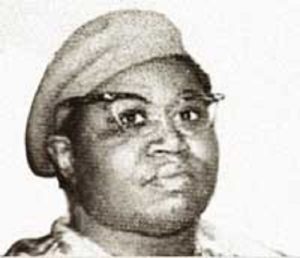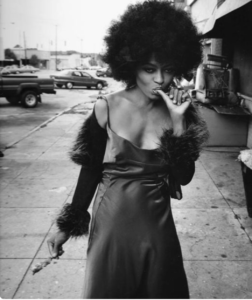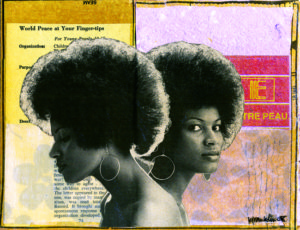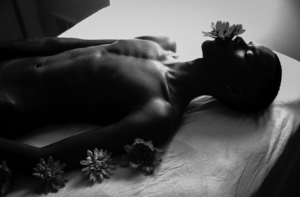
In today’s culture, a repetitive caricature is the “manic pixie dream girl.” She shows up in romantic comedies and dramas and young adult novels. She is Zooey Deschanel in 500 days of summer, Natalie Portman in Garden State, Kate Winslet in Eternal Sunshine on the Spotless Mind, every major female character in John Green’s novels. The manic pixie dream girl is always white and small, she is always beautiful in “non conventional way,” her main trait is “quirky.” She appeals to men because she is different than the other girls: deeper, more interesting, or doesn’t like to shop. In Sassafras Cypress and Indigo, Indigo seems like the Blaxploitation manic pixie dream girl. She doesn’t really seem like a real child: she is a 12 year old making poetic potions and talking to the moon and playing the fiddle behind a farm house for hours and hours. Instead of making friends, Indigo “sat in her window, working with her fiddle, telling everybody, the wind and all his brothers […] the turmoil of the spirit realm” (32). She is also small and beautiful and boys seem to fall in love with her every 10 pages. While the Black bohemian feminist version of the manic pixie dream girl shares some of the hyper quirky, unrealistic qualities of the white caricature, she also is majorly different. She is not interested in men, she says “I don’t think boys are as much fun as everybody says” (63). And unlike the white manic pixie dream girls and she is a main character rather than a side character designed to help the male character discover himself. She is also Black and in love with her Blackness. Still, I think there is some danger is the Black feminist dream girl. The Black fantasy child is magical, (while she loves her world of imagination) she also has extremely mature and deep ways of viewing the world, and doesn’t need friends to be happy. She lives off of the moon’s love and her family’s and elder’s love, but doesn’t need love from white people or other kids her age. She is “Black girl magic” and never not magic, she doesn’t need what the normal, less magical Black girls need. What the white girls need. Her unrealistic un-needing isn’t intended to demonize other Black girls, but I think it has the ability to fuel this culture in which Black girls are supposed to be to magical. This magic means Black girls don’t want approval from others, feel the pain of racism, feel pain at all. We are too magic so we don’t have problems that looking at the moon and playing the fiddle won’t solve, we don’t have problems a potion won’t solve and a bath won’t solve. But we do. I do.
I loved to read about Indigo: a wondrous, though un-real Black child. But I couldn’t help but think that she seemed a little manufactured. She too perfectly the embody the Blaxploitation feminist love child. I’m happy that she exists, though, especially considering her kind did not become a caricature in every other major motion picture. Like Mullen points out, Sassafras Cypress and Indigo is one of Shange’s lesser known works. Just as Mill’s Fransico is widely unknown. The major difference between the manic pixie dream girl and the Black feminist bohemian dream girl? The Black girl doesn’t sell.







